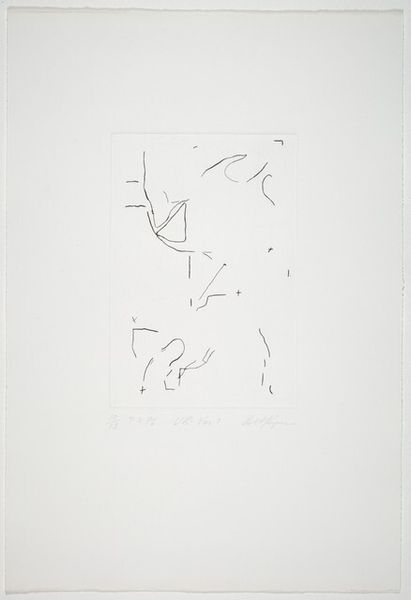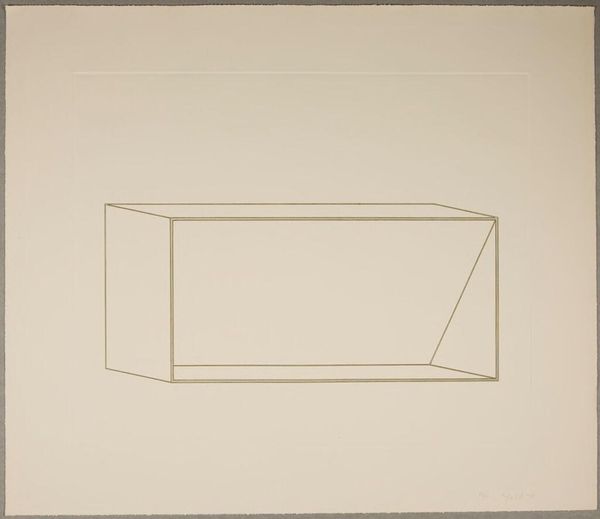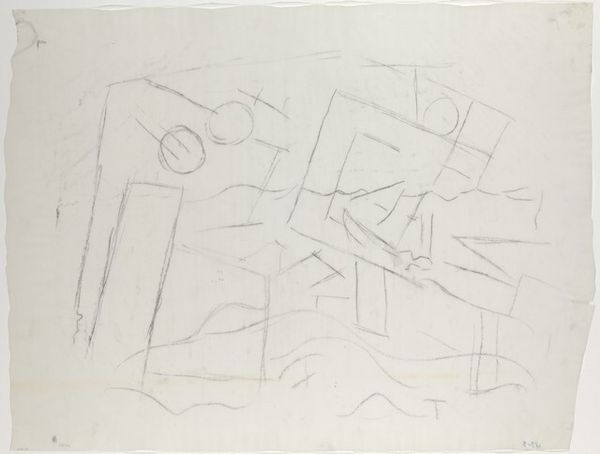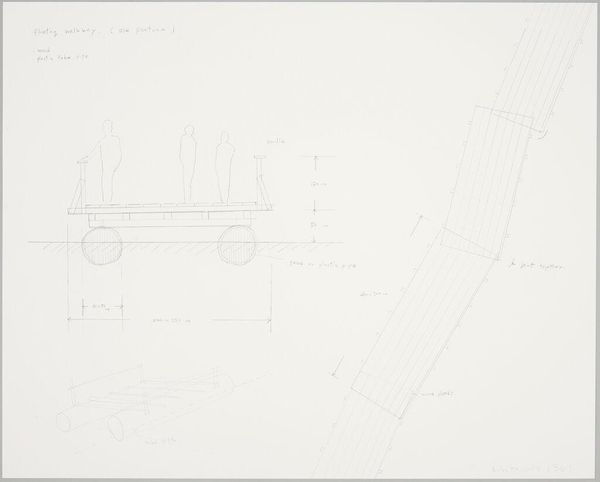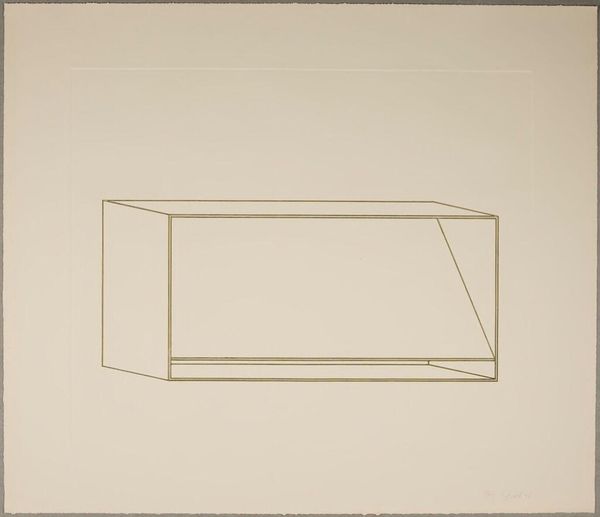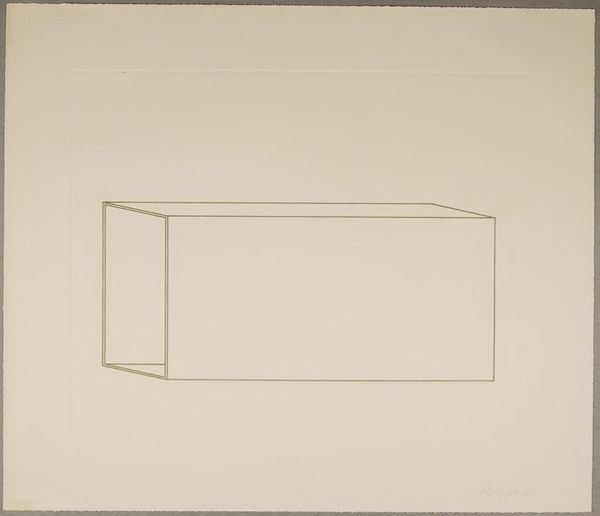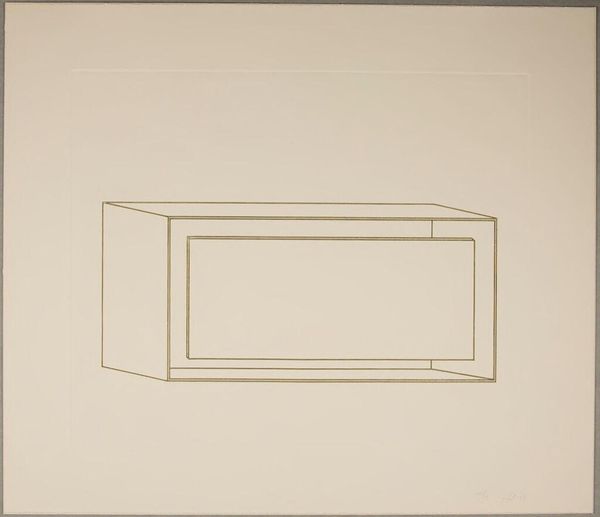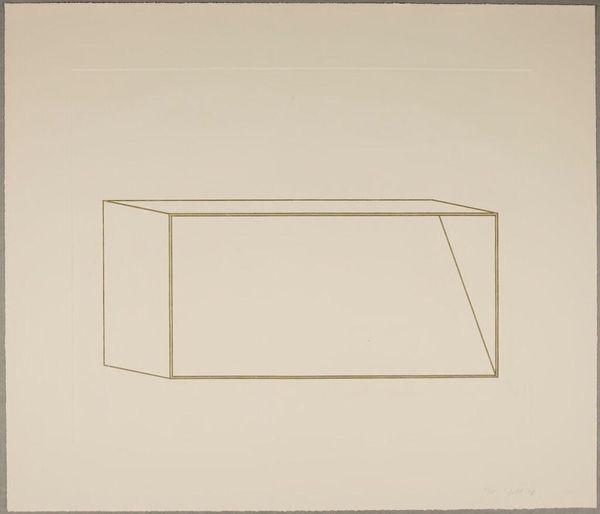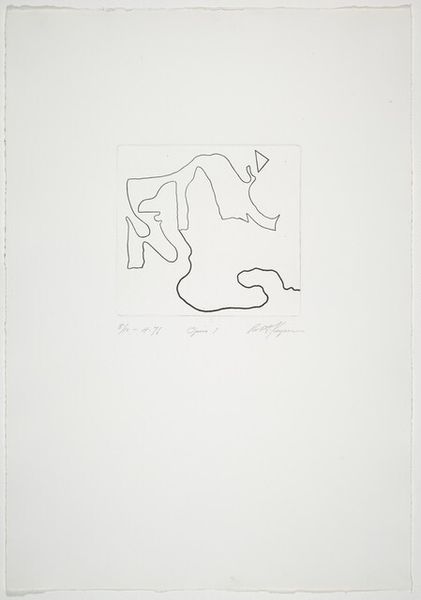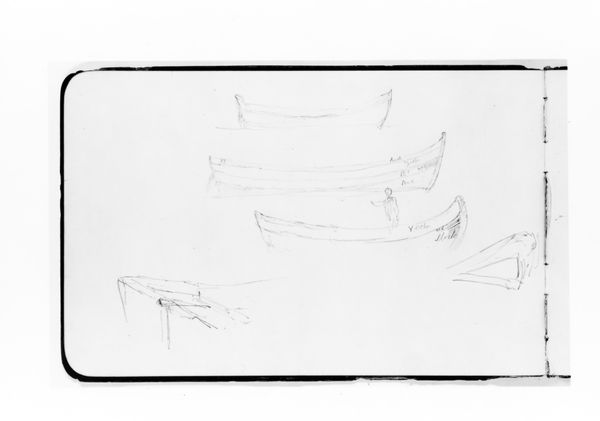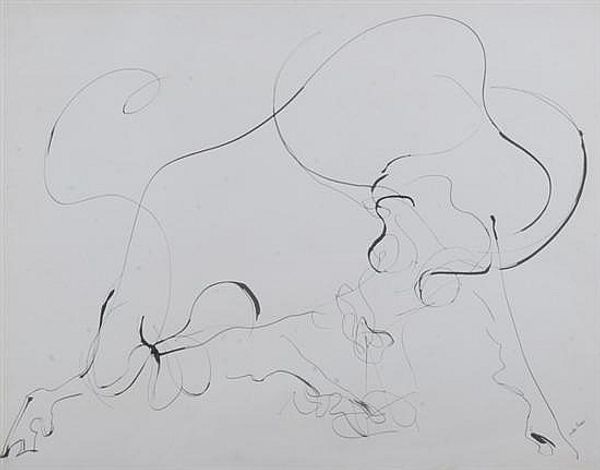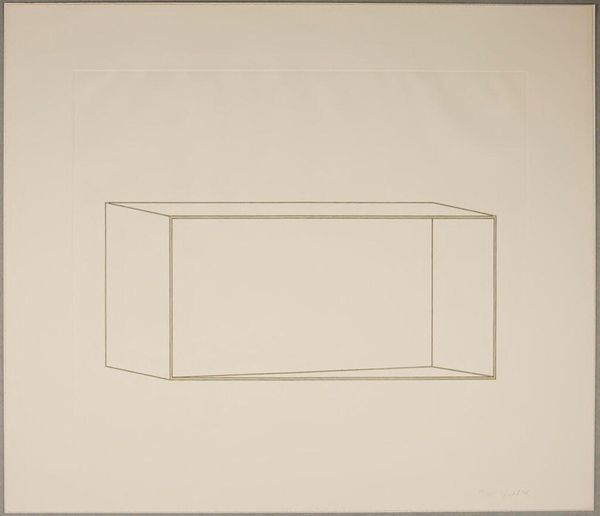
drawing, graphite
#
drawing
#
conceptual-art
#
minimalism
#
form
#
geometric
#
graphite
Dimensions: sheet: 52.55 × 107.95 cm (20 11/16 × 42 1/2 in.)
Copyright: National Gallery of Art: CC0 1.0
Editor: This graphite drawing is titled "Studies for 'Black Tower' and Other Sculptures (PB4)" and was created by Ronald Bladen in 1985. The forms feel like blueprints, maybe for monuments, but something about them feels unsettling, cold. What do you see in this piece? Curator: I see these drawings as more than mere preparation; they're a glimpse into the artist’s process, grappling with form and its implications. Considering this was created in 1985, we're in the thick of the Cold War. Geometric abstraction in public spaces often served as a symbol of power, order, or progress, narratives ripe for deconstruction. Could these potentially monumental forms, stark in their geometric rigidity, also reflect an underlying unease or anxiety about those very structures? Editor: That’s interesting, I hadn’t considered that. So the simplicity isn’t just about aesthetics, it’s about power? Curator: Precisely. Minimalism, seemingly detached, emerged from and reacted against specific sociopolitical contexts. Bladen’s forms, while abstract, invite us to question the values embedded within seemingly neutral shapes. What narratives are subtly reinforced, and who benefits? These forms almost appear unstable. Editor: That makes me think about how even abstract art can participate in cultural dialogues. I guess I assumed minimalism was apolitical. Curator: It's easy to see minimalist work that way. But isn't the illusion of objectivity itself a political stance? These "studies" are actually prompts for us to engage in conversations around how forms of authority are constructed, perceived, and potentially destabilized. And that dialogue can empower us. Editor: I will definitely consider this drawing more deeply now! Curator: Indeed, art encourages a deeper consideration and opens possibilities.
Comments
No comments
Be the first to comment and join the conversation on the ultimate creative platform.
